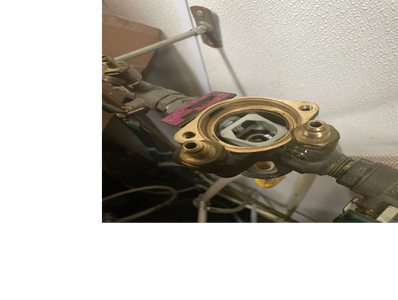Backflow Repairs & Replacement

Repairing a backflow assembly involves a series of steps to diagnose and address any issues or malfunctions that may be affecting its proper functioning. Here's an overview of how a backflow assembly repair process typically works:
- Diagnosis: The first step is to identify the problem or malfunction affecting the backflow assembly. This can involve visual inspection, testing, and analysis of the assembly's components. Trained technicians assess whether the assembly is functioning as intended and determine the cause of any issues.
- Isolation: If possible, the water supply to the backflow assembly is shut off to prevent further water flow during the repair process. This step ensures the safety of both the technicians and the plumbing system.
- Disassembly: The assembly may need to be disassembled to access the internal components that require repair. This could involve removing covers, valves, and other parts to gain access to the affected areas.
- Component Replacement: Damaged or malfunctioning components are replaced with new ones. This could include parts such as valves, gaskets, seals, diaphragms, springs, and other internal elements. It's important to use genuine manufacturer-recommended parts to ensure proper functioning.
- Cleaning and Maintenance: While the assembly is disassembled, technicians may clean and lubricate components as needed. This helps to remove debris, scale, and buildup that might hinder proper operation.
- Reassembly: After the necessary repairs and replacements have been made, the backflow assembly is reassembled. The new or repaired components are carefully installed to ensure proper alignment and sealing.
- Testing: The repaired backflow assembly is tested to ensure that it is functioning correctly and preventing the reverse flow of water as intended. This often involves conducting pressure tests and other relevant checks.
- Documentation: Proper documentation of the repairs is crucial for regulatory compliance and future reference. Technicians usually provide a report detailing the repairs performed, the replaced components, and the results of testing.
- Water Supply Restoration: Once the repair is confirmed successful, the water supply to the backflow assembly is restored. Technicians carefully monitor the assembly to ensure that it continues to function properly after being put back into service.
- Reporting: In many cases, a report of the repair is submitted to relevant authorities, such as local water departments, to demonstrate compliance with regulatory requirements.
It's important to note that backflow assembly repair should be carried out by trained and certified professionals who have expertise in handling plumbing systems and backflow prevention devices. Proper repair techniques ensure the continued reliability and effectiveness of the assembly in preventing contamination of the water supply.
This website uses cookies.
We use cookies to analyze website traffic and optimize your website experience. By accepting our use of cookies, your data will be aggregated with all other user data.